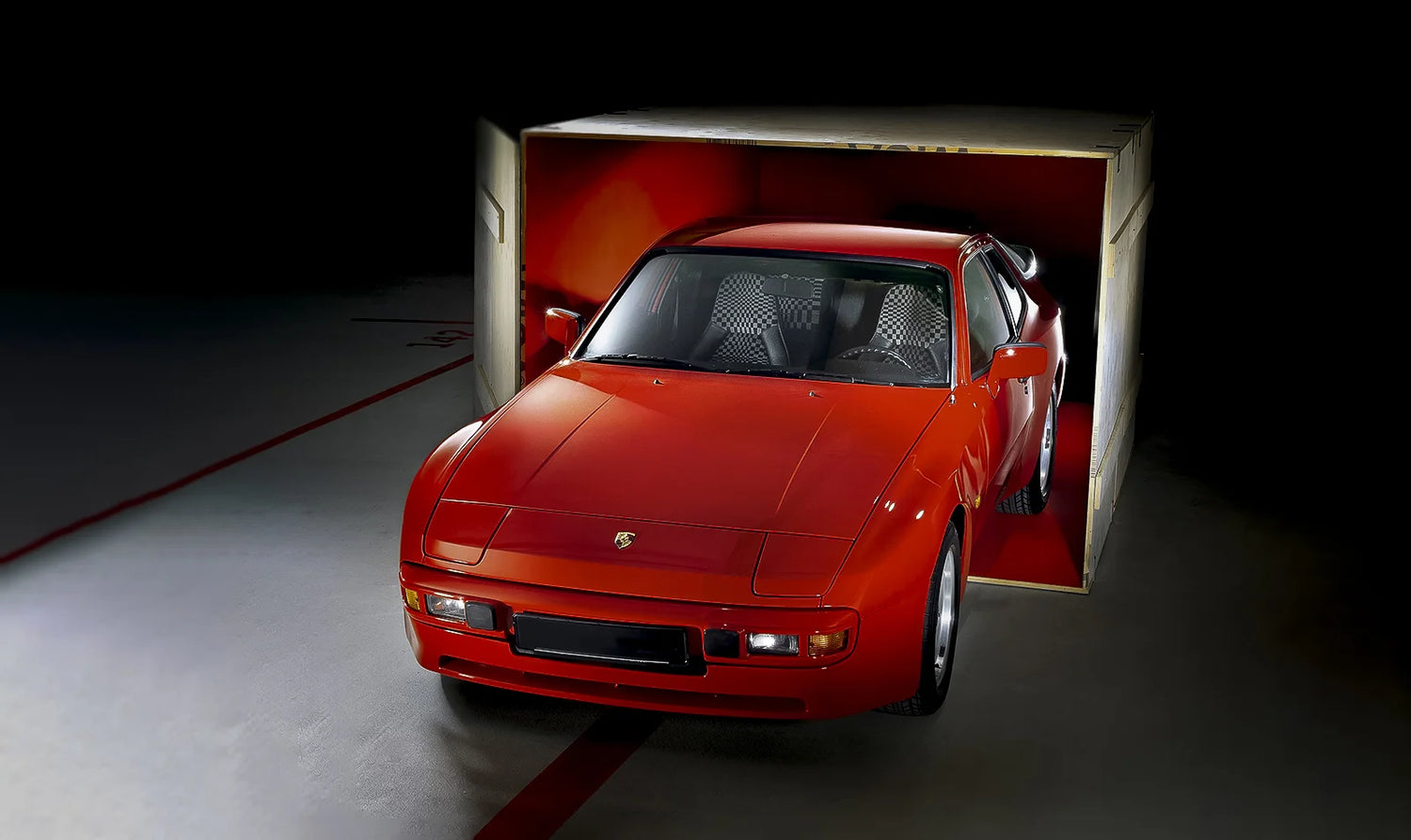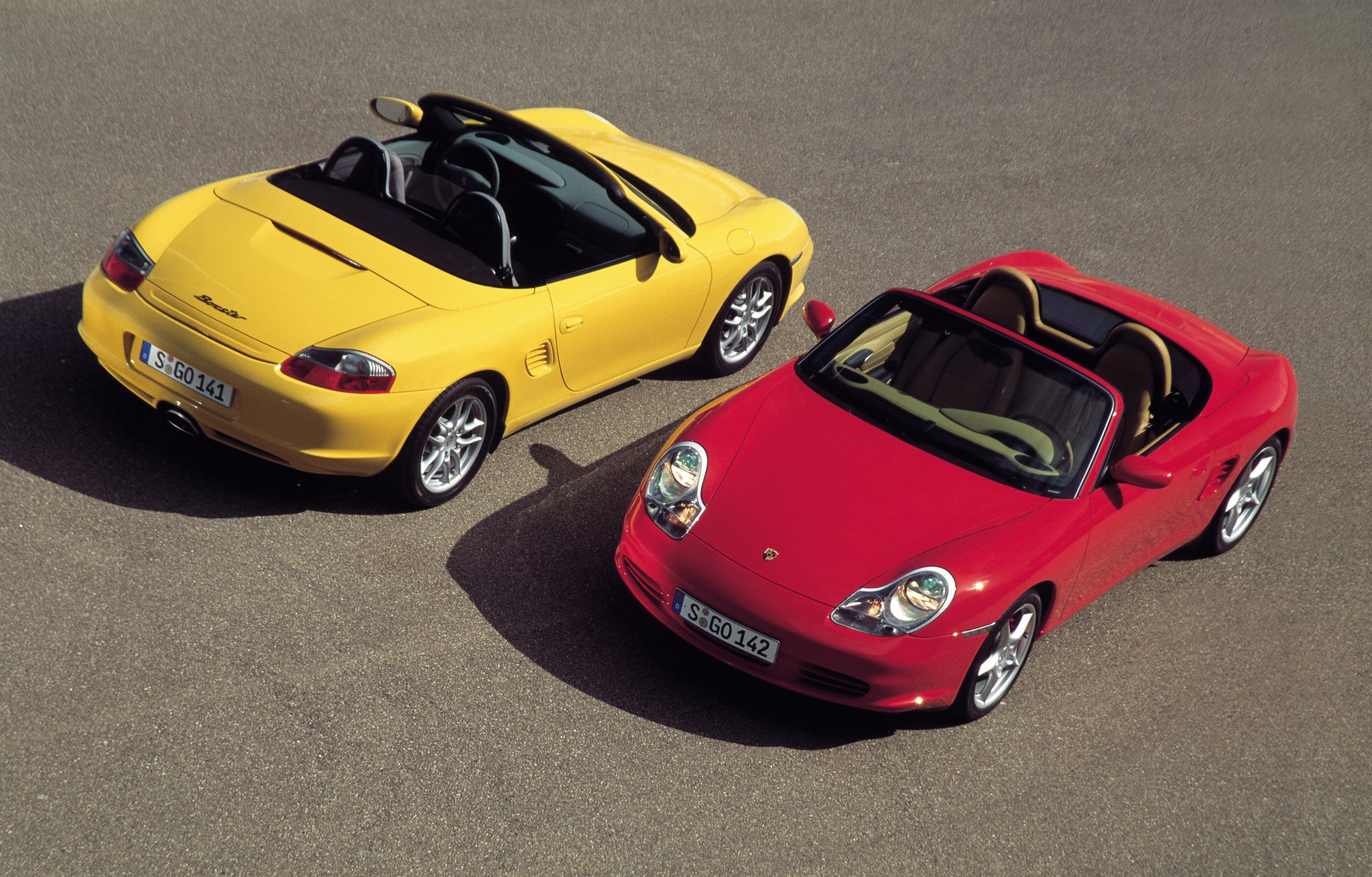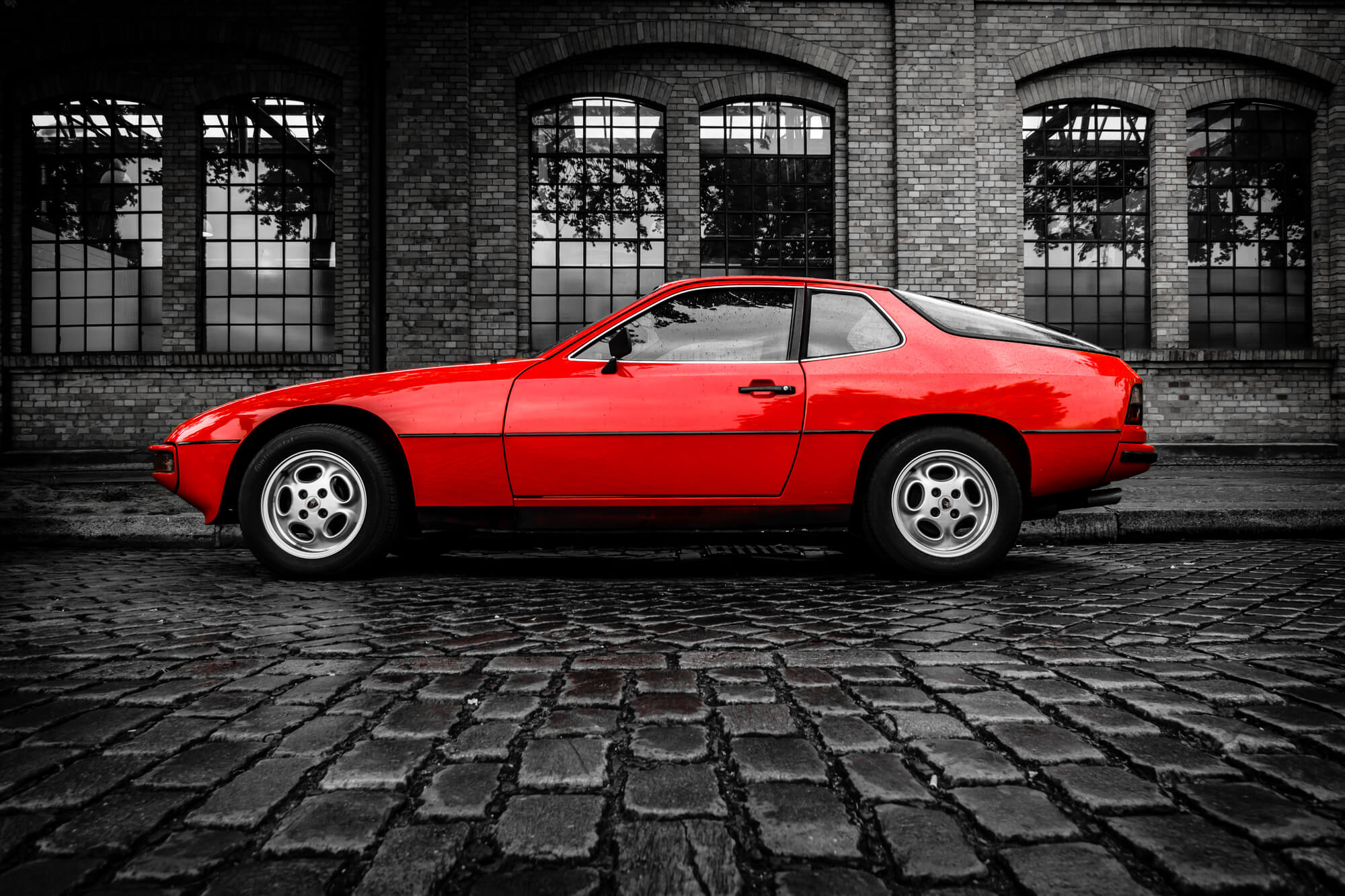Introduction
When you think of a classic Porsche, the first thing that pops in mind is definitely a 911, with the chrome bumpers and Fuchs alloys. Although the flat-six and "luftgekult" sports cars defined the brand's rich heritage, they are far from the only models worth considering. If you are a Porsche fan, and if you are reading this, you are, then you know that there are more exciting models in the brand's portfolio. One of such cars is a Porsche 944. Produced during a very interesting period in Porsche's history, the 944 was an entry-level model that delivered compelling driving dynamics, good performance, and everyday usability. Even though it was the best-selling Porsche model to date, it was kind of forgotten for a while until the recent rise in interest in anything classic, and Porsche brought it back into the spotlight. Today, we will tell you all you need to know if you are in the market for one of those compact, cool-looking and rewarding 80s icons.

What Is It?
Porsche entered the front-engine sports car market in 1976 with the 924, engineered and produced with the help of Audi. However, although the 924 was a decent car, enthusiasts criticized the lack of power and poor performance. In 1982, Porsche answered with the 944, an improved, faster and better-looking model that was the right car for the times. Even though it was based on the 924 platform and technical layout, the 944 had different engines, suspension components, and bodywork and was more expensive and faster. In those years, Porsche's model lineup consisted of three front-engine cars and the 944 was slotted between the cheapest and slowest 924 and below the V8-powered and luxurious 928.

Porsche 944 Model Timeline
The Porsche 944 was produced from 1982 to 1992. The early models had a 2.5-litre four-cylinder engine with 163 hp. In 1985, Porsche slightly restyled the 944, with the most significant difference being the interior with an all-new dashboard and better ergonomics. The 944 Turbo was introduced the same year with a 2.5-litre turbocharged four-cylinder and 220 hp. In 1987, a Porsche 944S was offered with 190 hp, with the help of 16-valve cylinder heads. A year later, the base 944's power rose to 160 hp and the 944 Turbo S was presented with 250 hp and significantly better performance.

Interestingly, the 944 Turbo had its chassis code (951) because many components were different from those of the standard 944. In 1989, Porsche upgraded the base model from a 2.5 to a 2.7-litre engine with minimal power gain (165 hp), but the most exciting improvements arrived a year later, in 1990. The 944S2 debuted with the 3.0-litre engine and 211 hp, and Porsche offered a convertible version. Porsche presented the 944 until late 1991, while the Porsche 924 production stopped in 1988.

The Porsche 944 Bodywork
As with any classic car that is a few decades old, corrosion is always an issue, even though the 944 had a galvanized body. The usual problematic spots are the sills, floor and bottom of the luggage compartment where the spare wheel is located. Rust will be a problem with all cars, especially those that are repaired after damage or repainted. The only 944s that will have spotless bodywork are the ones that are ideally kept all their life, but those examples command a premium due to condition. Since the 944s were cheap at one point in their history, they were owned by less enthusiastic owners who didn't pay much attention to details like perfect paint or corrosion-free sills. That is why it is crucial to thoroughly inspect the bodywork before buying it for any signs of filler, rust, or damage repair. This is especially important with 944 Turbo models known for their sketchy handling.

Other common bodywork problems include failing plastic trim pieces, rubber seals, leaking sunroofs and rear glass. It is easy to spot cars neglected by sun-worn rear carpets, condensation in rear lights and cracked plastic trim.
The Porsche 944 Engines
Besides being all-alloy units, the engines in the Porsche 944 ranged from 2.5 to 3.0 litres, which made them one of the biggest-displacing four-cylinders ever made. Known as the M44 family of engines (with or without the turbocharger), the four-cylinder layout was deliberately used to achieve higher torque figures and help the driving dynamics. All Porsche 944s used the K-Jet fuel injection system, which is dependable but known to fail if the car wasn't used for long period of time.

The base 2.5-litre 8v engine might be the least powerful with 163 hp (143 in US-spec cars), but it had 151 lb-ft of torque (205 Nm), which resulted in a respectable 7.4 seconds to 60 mph and 130 mph top speed, more than decent figures for the standards of the day. All engines were tilted to fit under a low bonnet, and counter balance weights were used on the crankshaft to reduce the vibration associated with a large four-cylinder. Regardless of the model year and specification, the 8v engines are the most reliable units in the 944 range.
The 16-valve units (2.5 and 3.0) are noticeably more powerful and quicker but more complicated. Regular and meticulous servicing is the key, but unfortunately, very few owners actually did so. The top end needs servicing from 120,000 miles and complete rebuilt at 150,000. On the 944 S2with the 3.0-litre motor, the cylinder heads are known to cause problems which, if ignored, can lead to fatal engine failures. Cam belts are designed to be replaced every 40,000 miles or four years. Apart from rubber camshaft belts, changing the balance shaft belt at the same interval is essential.

The 944 Turbo, with its 220 to 250 hp, 258 lb-ft of torque (350 Nm), and lightweight, is a still rapid car with 5.7 seconds to 60 mph and almost 170 mph top speed. However, it is the 944’s most expensive and most delicate machine. The cooling system is also one of the points that were known to fail, and in the case of all-alloy engines, overheating could damage not only the cylinder heads but also the engine block. Turbos are known to have problems with the K-Jetronic systems and failing cylinder head gaskets. This is probably the case if you notice blue smoke coming from the exhaust. Excessive oil consumption might come from worn piston rings that can be changed, but block repair and resurfacing the bores are pretty complicated and expensive.

Regardless of the engine in the Porsche 944 you are after, it is essential to check how it idles, check for leaks, and take it for a test drive. The acceleration should be smooth, and the car should deliver power all through the rev range.
The Porsche 944 Transmission
One of the most exciting aspects and the key to the 944's sublime handling is the transaxle layout with the engine in the front and gearbox near the rear axle. This is the main reason why the 944 has a practically ideal weight distribution of 50.7% front and 49.3% back. However, this engineering feature can cause expensive maintenance. The 944 was offered with a three-speed automatic transmission, but these are scarce. The majority were delivered with a 5-speed manual gearbox In well-maintained vehicles, the gearshifts feel nice and solid, while in high-mileage examples, shifting gears might feel a bit vague. The most common issue with the transmission is worn pinion or differential bearings. Differential bearings will produce a noticeable whine while driving. Due to the specific layout, clutch repair will be expensive because of the labour involved.

Porsche 944 Suspension And Brakes
The 944 suspension layout and components are generally trouble-free; however, since most of the cars on the market are tired runners or restoration projects, it is crucial to know what to look for. If the car has not been exceptionally well-maintained, suspension bushes may be worn out and cracked. These will exhibit themselves as low and high speed “clunks” and knocking noises. When everything is okay, the 944's ride is pretty compliant, but if the car feels saggy, the reasons are worn shock absorbers. When you inspect the suspension, you should also pay attention to brake lines because they are known to rot and fail. Also, note that the 944 Turbo has bigger and more powerful brakes than the rest of the range.

The Porsche 924 and 944 Interchangeable Parts
One of the questions that often arises when discussing 944 as a subsequent purchase is the level of interchangeability between this model and its older and less powerful sibling. Since those two cars were built on the same platform, doors, glass, and bonnet are interchangeable, but wings, bumpers and other exterior details are not. The early 944 (pre-1985 models) have some interior pieces that are the same as those in 924, but there are also some differences. The engines are entirely different; even the transmissions cannot be swapped without significant work. However, headlights, fog lights and rear lights are mostly the same, as well as some smaller mechanical components. Some enthusiasts considered buying a cheap 924 as a donor car but realized that few parts could be swapped. So, avoid making the same mistake.

Porsche 944 Parts By FrazerPart
Compared to 911 parts prices, the 944 is noticeably cheaper to run and maintain, and we at FrazerParts are proud to offer a wide range of OEM parts for your 944. Whether restoring or just maintaining the 944, 944S, or 944 Turbo, we have everything you need for a complete mechanical overhaul, along with some exterior and interior parts and components. You can shop confidently, knowing that all our products are original items at affordable prices.

Which Porsche 944 To Get?
The great thing about the 944 is that Porsche produced over 170,000 examples in a 10-year production run. That makes this car plentiful and easy to come by. However, the bad thing is that the number of pristine vehicles is relatively small. The 944 was a model in the lower part of the Porsche model spectre that became desperately outdated and neglected by Porsche after the introduction of Boxster in 1996. It was discarded, cheap and driven with no mercy by people who were reluctant to invest in proper maintenance Finding mint, low-mileage cars is rare, and they tend to cost a significant amount of money, but you can still have a lot of fun with decent and well-sorted standard models. The base 944, with its 163 hp, will not be fast by today's standards, but S models, especially the S2, will feel far livelier and more dynamic. Of course, the Turbo models are exciting but rare and expensive. Currently, the 944 Turbo, in excellent condition, can command prices of over £30,000 (GBP) which are Porsche 911 997 money. The road-worthy, early model standard 944 will cost around £5,000 (GBP).

The main concern with the 944 is maintenance; if the car has an entire service history, the high mileage shouldn't be of any problem. Brand specialists should thoroughly examine cars without service records just to be sure that there are no hidden, expensive problems. The project cars are sound propositions if you have access to parts and are a DIY mechanic. Otherwise, complete restoration will not make financial sense.
Conclusion
Once forgotten, the 944 has returned to the enthusiast's spotlight in a big way. Still reasonably quick and with beautiful handling, analogue steering and a classic car feel, it is a perfect entry-level Porsche on a budget. With pop-up headlights and rear panorama glass, it is a quintessential 80s sports car best enjoyed on empty roads and a synth-pop compilation on the stereo. Although it is not a typical Porsche model, it represents an important period in the company's history and deserves to be saved and enjoyed by future generations.



